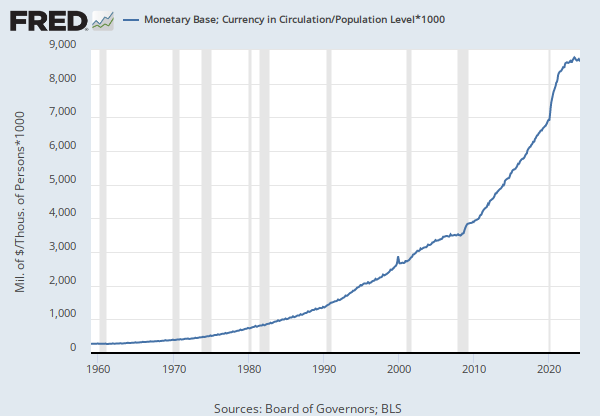Federal Reserve Economic Data
Data in this graph are copyrighted. Please review the copyright information in the series notes before sharing.
Notes
Source: U.S. Census Bureau
Release: Housing Vacancies and Homeownership
Units: Thousands of Units, Not Seasonally Adjusted
Frequency: Quarterly
Notes:
Housing unit is a house, an apartment, a group of rooms, or a single room occupied or intended for occupancy as separate living quarters. Separate living quarters are those in which the occupants live separately from others in the structure and which have direct access from the outside of the building or through a common hall. For vacant units, the criteria of separateness and direct access are applied to the intended occupants whenever possible. If the information cannot be obtained, the criteria are applied to the previous occupants. Tents and boats are excluded if vacant, used for business, or used for extra sleeping space or vacations. Vacant seasonal/migratory mobile homes are included in the count of vacant seasonal/migratory housing units. Living quarters of the following types are excluded from the housing unit inventory: Dormitories, bunkhouses, and barracks; quarters in predominantly transient hotels, motels, and the like, except those occupied by persons who consider the hotel their usual place of residence; quarters in institutions, general hospitals, and military installations except those occupied by staff members or resident employees who have separate living arrangements.
Suggested Citation:
U.S. Census Bureau, Housing Inventory Estimate: Total Housing Units in the United States [ETOTALUSQ176N], retrieved from FRED, Federal Reserve Bank of St. Louis; https://fred.stlouisfed.org/series/ETOTALUSQ176N, .
Source: U.S. Census Bureau
Release: National Population Estimates
Units: Thousands, Not Seasonally Adjusted
Frequency: Monthly
Notes:
The intercensal estimates for 1990-2000 for the United States population are produced by converting the 1990-2000 postcensal estimates prepared previously for the U. S. to account for differences between the postcensal estimates in 2000 and census counts (error of closure). The postcensal estimates for 1990 to 2000 were produced by updating the resident population enumerated in the 1990 census by estimates of the components of population change between April 1, 1990 and April 1, 2000-- births to U.S. resident women, deaths to U.S. residents, net international migration (incl legal & residual foreign born), and net movement of the U.S. armed forces and civilian citizens to the United States. Intercensal population estimates for 1990 to 2000 are derived from the postcensal estimates by distributing the error of closure over the decade by month. The method used for the 1990s for distributing the error of closure is the same that was used for the 1980s. This method produces an intercensal estimate as a function of time and the postcensal estimates,using the following formula: the population at time t is equal to the postcensal estimate at time t multiplied by a function. The function is the April 1, 2000 census count divided by the April 1, 2000 postcensal estimate raised to the power of t divided by 3653.
Suggested Citation:
U.S. Census Bureau, Total Population: All Ages including Armed Forces Overseas [POP], retrieved from FRED, Federal Reserve Bank of St. Louis; https://fred.stlouisfed.org/series/POP, .
Source: U.S. Bureau of Labor Statistics
Release: Employment Situation
Units: Thousands of Persons, Not Seasonally Adjusted
Frequency: Monthly
Notes:
Civilian noninstitutional population is defined as persons 16 years of age and older residing in the 50 states and the District of Columbia, who are not inmates of institutions (e.g., penal and mental facilities, homes for the aged), and who are not on active duty in the Armed Forces.
The series comes from the 'Current Population Survey (Household Survey)'
The source code is: LNU00000000
Suggested Citation:
U.S. Bureau of Labor Statistics, Population Level [CNP16OV], retrieved from FRED, Federal Reserve Bank of St. Louis; https://fred.stlouisfed.org/series/CNP16OV, .
Release Tables
- Table A-1. Employment status of the civilian population by sex and age: Monthly, Not Seasonally Adjusted
- Monthly, Seasonally Adjusted (population data is not adjusted for seasonal variation; not seasonally adjusted version used)
Related Data and Content
Data Suggestions Based On Your Search
Content Suggestions
Related Categories
Releases
Tags
Permalink/Embed
modal open, choose link customization options
Select automatic updates to the data or a static time frame. All data are subject to revision.



























